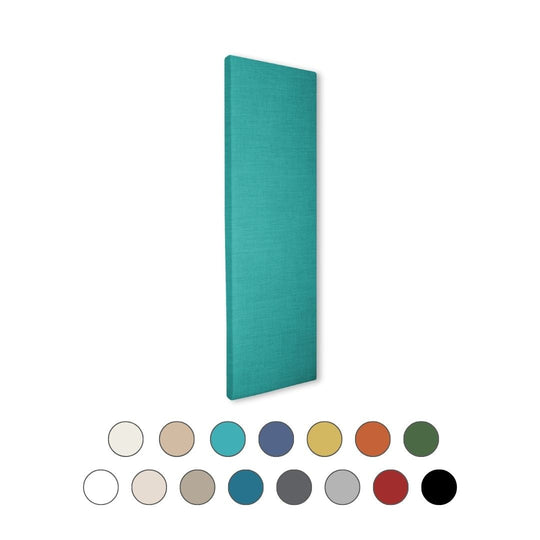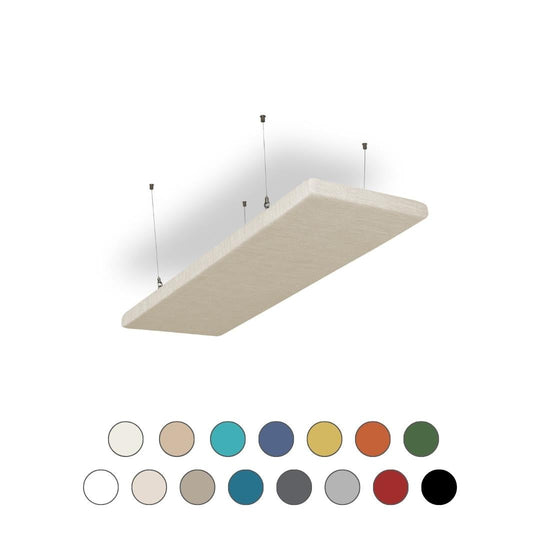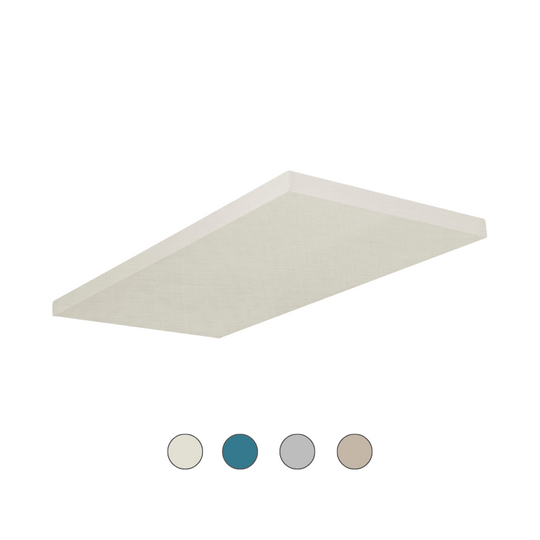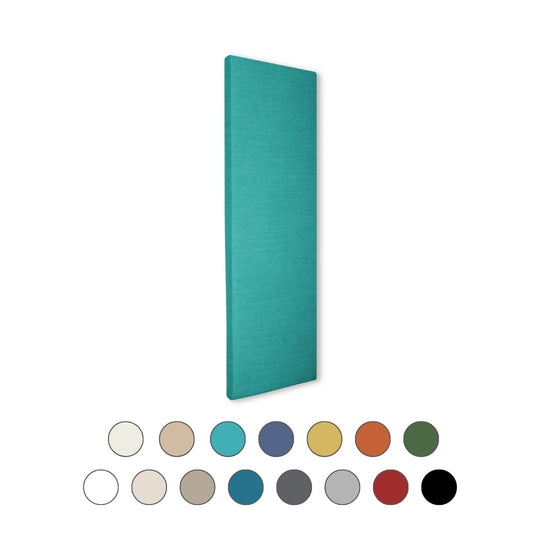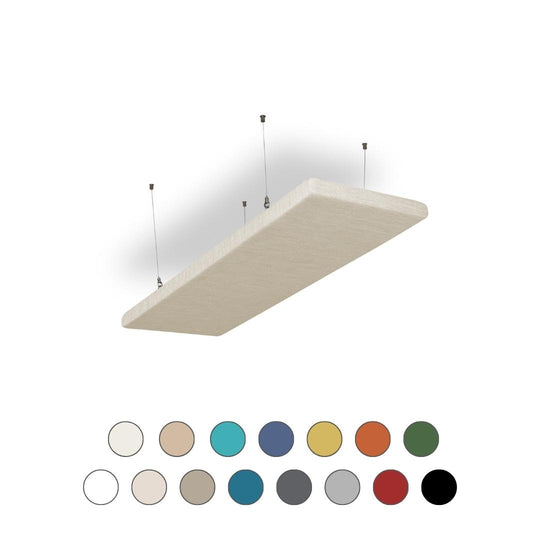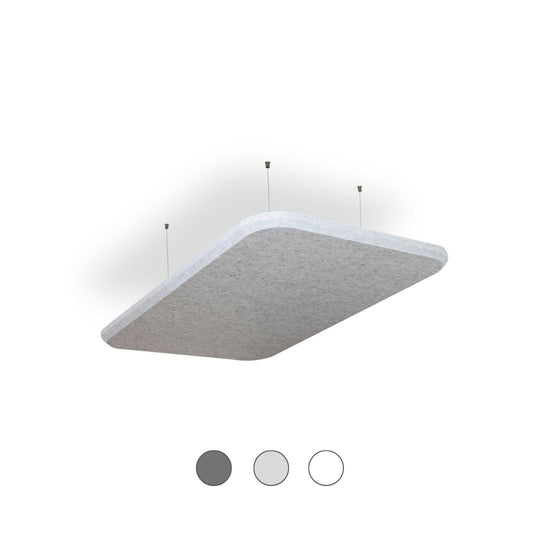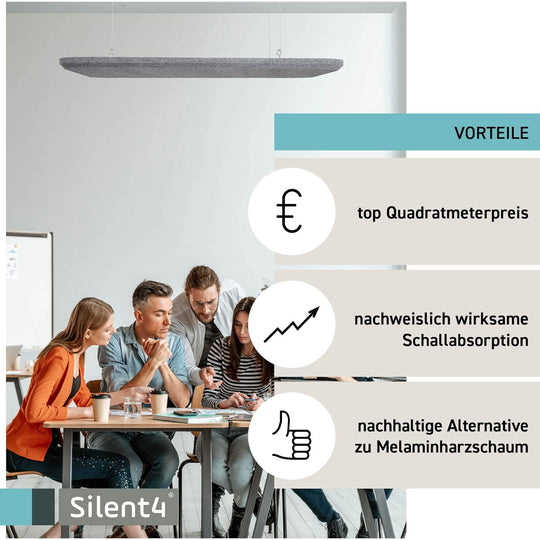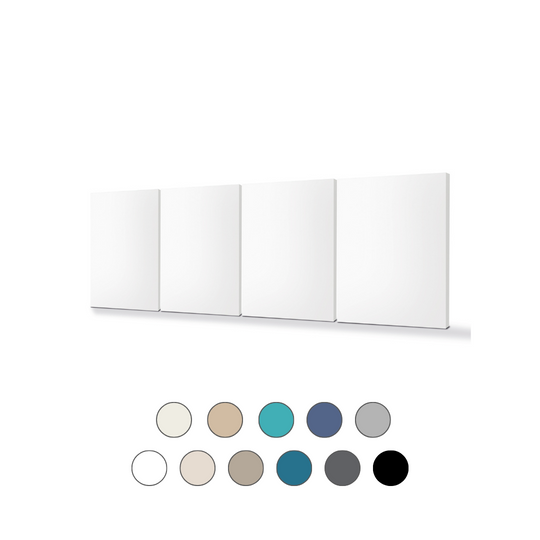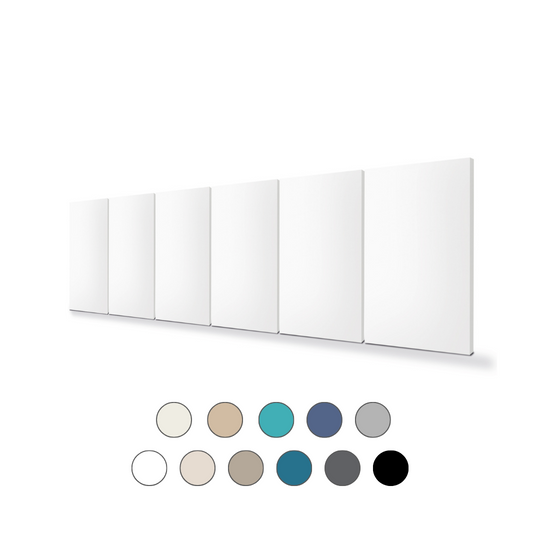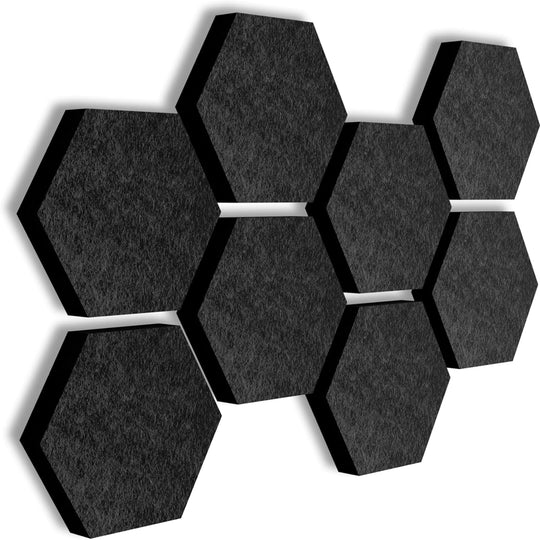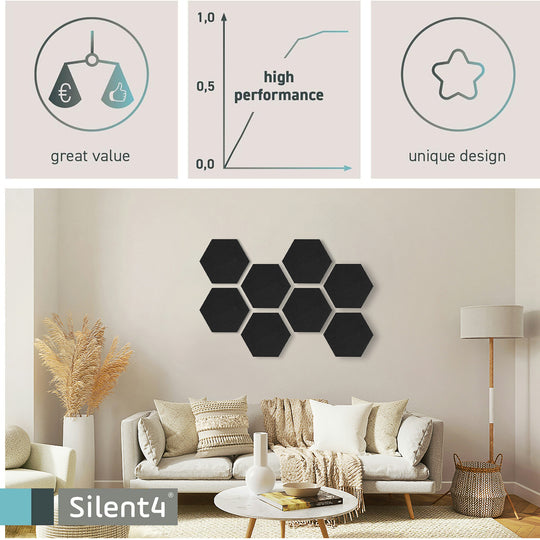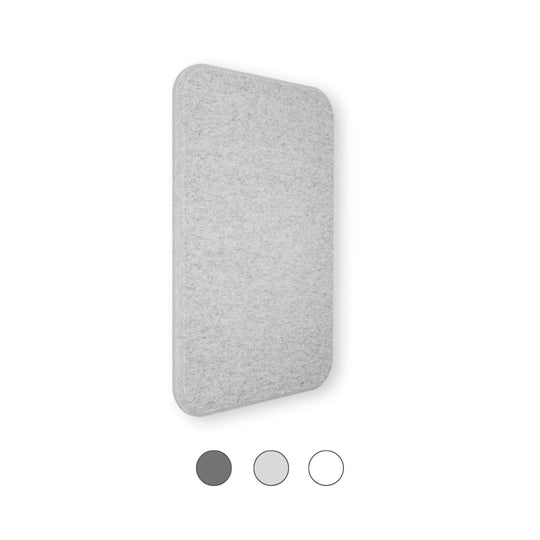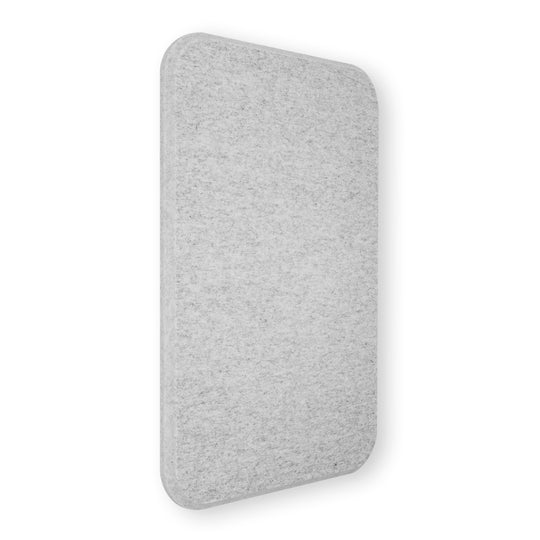HOW DO ACOUSTIC PANELS
FOR THE WALL OR CEILING WORK?
The problem when it echoes
Poor room acoustics are caused by an unchecked multiplication of sound waves. What can you do about it?
You can take structural measures, such as in large event centers. Or balance the acoustics with sound absorbers.
NOISE MAKES YOU ILL
Das hat massive Auswirkungen auf unser Wohlbefinden und unsere Gesundheit. Studien zufolge sinkt die Leistungsfähigkeit von Mitarbeiter*innen in lauten Büroumgebungen um 5 bis 10 Prozent.
Permanente Beschallung wird also zunehmend zum Stressfaktor, zuerst für das Gehirn, dann für das Nervensystem im Allgemeinen. Mittlerweile wurden Tinnitus und Schwerhörigkeit zu Volkskrankheiten und die „lärmbedingte Schwerhörigkeit“ wurde als Berufskrankheit anerkannt.
Doch neben physischen Auswirkungen sind auch die psychischen nicht zu übersehen. Dauernde Lärmbelastung kann zu Konzentrationsmangel, Schlafstörungen, Kreislauferkrankungen, Bluthochdruck, Lernbehinderungen und sogar psychiatrischen Krankheiten führen.
Eine laute Umgebung ist also nicht auf die leichte Schulter zu nehmen. Zum Glück gibt es einfache Lösungen für beruhigte Räume und eine bessere Arbeitsatmosphäre: Akustikpaneele .

HOW DO ACOUSTIC PANELS WORK?
Sounds and tones propagate through the room in large or small sound waves, depending on the source. If these waves hit smooth surfaces, such as ceilings or windows, they reflect and overlap, thus creating sound energythat we perceive as noise.
Acoustic panels therefore consist of materials with a porous structure. The sound waves penetrate this material through the pores and lose energy through friction. The kinetic energy of the particles is converted into heat energy (thermal energy). However, the heat is so small that we cannot perceive it. Hardly any sound waves escape from the acoustic panels. The sound energy in the room decreases, the reverberation time decreases Acoustics get better.
PERSONAL
CONSULTATION
AUSTRIAN
PRODUCTION
30 DAYS
RETURN POLICY
SECURE
PAYMENT
THE AGONY OF CHOICE:
DO I NEED WALL PANELS OR CEILING PANELS?
Akustische Lösungen orientieren sich einerseits an den räumlichen Gegebenheiten, andererseits an der Nutzung dieser Räume.
Wichtig ist immer die Frage: Breitet sich der Schall von einer Quelle aus oder gibt es mehrere Schallproduzent*innen aus unterschiedlichen Richtungen?
Im Idealfall hat man die Möglichkeit ein Set aus Wand- UND Deckenpaneelen in einem Raum zu installieren. So vermindert man rundum die Flächen, an denen der Schall reflektieren kann.
Ist es jedoch zum Beispiel in einem Konferenzraum nicht möglich, Wandpaneele zu montieren, kann es am sinnvollsten sein, Deckenpaneele direkt über den Konferenztisch zu hängen, um so einen Großteil der Schallenergie abzufangen.
In einem sehr niedrigen Raum hingegen kann es durchaus von Vorteil sein, etwas mehr Akustikpaneele an die Wand zu hängen und dafür die Decke freizulassen.
Frage dich also immer:
Wo wird der Schall produziert und an welchen Flächen reflektiert er am ehesten?
WHAT MATERIALS ARE THE SILENT4 ACOUSTIC PANELS MADE OF?
This means that our absorbers are suitable for use in everyday environments such as open-plan offices, canteens, ordinations, school classes, conference rooms or even living rooms and children's rooms. So wherever there is a lot of talking and the spatial conditions lead to high sound energy.
We cover the acoustic panels with acoustic materials, which transmit the sound waves excellently into the core and guarantee the panels their stylish appearance.

HOW ARE ACOUSTIC PANELS ATTACHED?
The wall panels from PET fleece are attached with a Velcro system. The velcro strips are self-adhesive on the back, so all you have to do is peel off the film and stick the velcro strips to the wall. The fleece finally sticks to the Velcro side of the adhesive strips. If the plate is crooked, you can realign it at any time using the Velcro strips.
The series DIVID is mounted on the wall with double-sided adhesive tape.
The ceiling panels are attached to the ceiling either with ropes or directly with screw hooks. For this you need a drill and preferably two more helping hands. When installing the rope, you can adjust the suspension height individually.
Do you need help? Contact us!
Contact form





